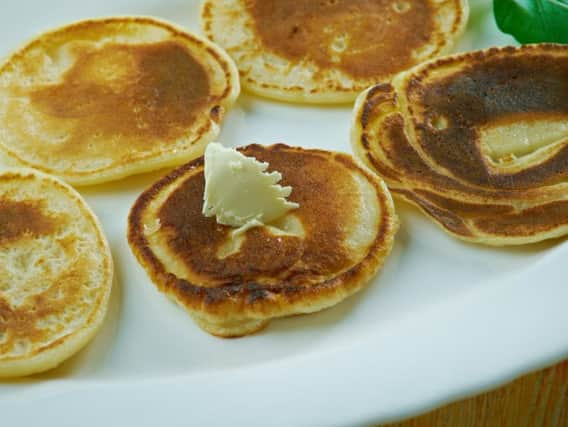Long lost Lancashire dish unlikely to be making a comeback any time soon


Old cook books are often interesting not just for the recipes, but like the family Bible, they are often receptacles for pressed flowers, personal notes, photographs, in fact any personal and precious memento.
My auntie would clip interesting articles out of newspapers and magazines and store them in her trusty “Mrs Beeton”. A cutting from the Preston Herald of February 23, 1895 mentioned a dish apparently specific to our area. You might want to try it at home – or not: Throdkin.
Advertisement
Hide AdAdvertisement
Hide AdThe unnamed author claims it was a speciality of Woodplumpton, Catforth, Treales, Roseacre and Wharles, and describes it enigmatically as “very smart tackle, and a little bit of it will go a long way”.
Basically it was oat meal, mixed with scraps of “lard-leaves” after a pig had been rendered down and salted, and in this case served on a bed of well-buttered and peppered onions.It became such a dish of legend that it even had some poetry attached to it: not quite of the standard of Robert Burns’ Address to the Haggis, but easier to learn, and just as heartfelt.
Throdkin hot and throdkin cold,
Throdkin new and throdkin old,
Throdkin tender, throdkin tough,
Thank God, lads, we’ve had throdkin enough.
So wholesome was the food that in Westmorland and Lunesdale, “throddy” came to mean a sturdily-built young man. Further research suggests it was particularly a breakfast dish, that it could be sliced as a tart rather than eaten with onions, and that it first appeared around 1837, and in Blackpool, in its early days a place given to feelings of superiority, they mixed it with currants and served it as a cake. Contemporary twists use illustrations which suggest it has the appearance of drop scones.
Though how that tasty-looking creation can come from the bare bones described in one old Lancashire Cookbook is beyond me – it which simply lists the ingredients as 1lb course oatmeal, 6ozs lard and a pinch of salt. Serving suggestions are to eat hot or spread with golden syrup and eaten cold.
Advertisement
Hide AdAdvertisement
Hide AdThat same cutting has the story of “old Dick J – who belonged to Woodplumpton, who had such a large nose – a nose with a pup-nose at the end of it, that everybody stared hard at it when its owner was in Preston.
“When Dick met people staring at his smeller, thus he would get hold of it, turn it aside, and say ‘Con ya ged past?’”
Quite why throdkin should remind the author of this Pinocchio-style proboscis isn’t clear – unless he is spicing his tale with a few porkies himself?
An article in the Lancashire Daily Post of February 22, 1933 describes John Hodgson (“Odgeon,” while we are speaking in dialect tongues) of Great Eccleston, and his approaching 88th birthday.
Advertisement
Hide AdAdvertisement
Hide AdHis long life he put down to throdkin being a staple diet of his early life, and as a special birthday treat his daughter-in-law, with whom he lived, was to make him “another bite of his favourite cake”.
It is not known how much longer he lived.